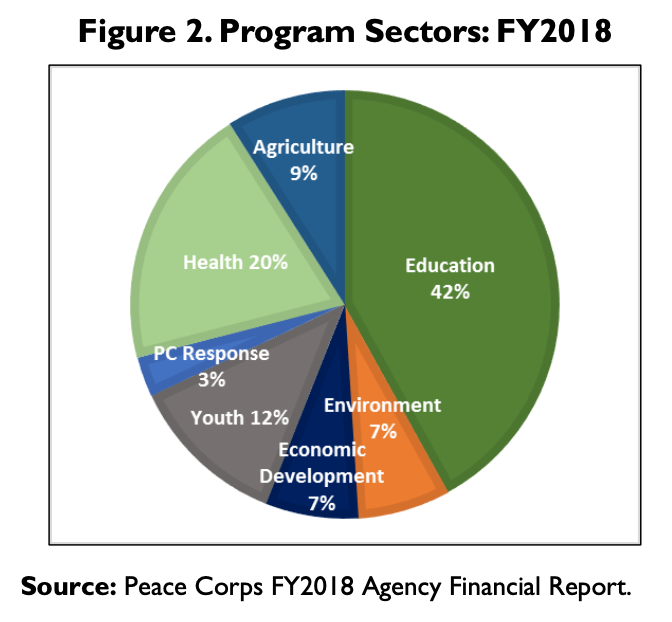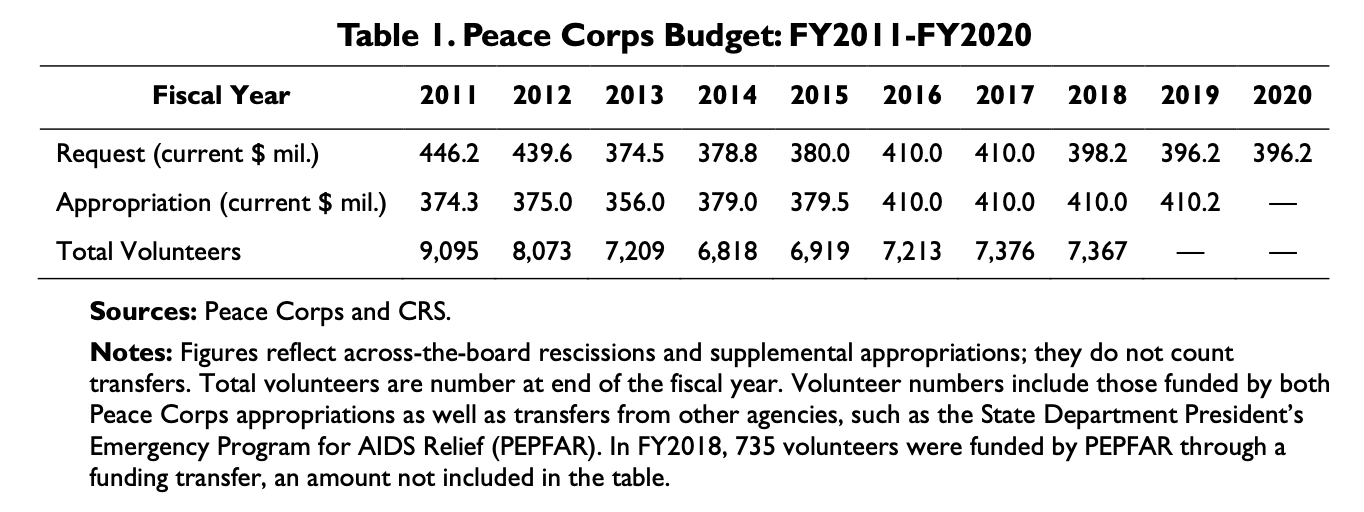“A peak behind the curtain”.
On June 26th, 2019, the Congressional Research Service (CRS) assembled a detailed yet reader friendly overview of the Peace Corps to keep members of Congress informed on the organization.
If you’re interested in reading the document for yourself, it’s a concise and enlightening read.
For the rest of us that appreciate cliff notes, we’ve listed out some of the most interesting points that are relevant to Peace Corps applicants and Returned Peace Corps Volunteers alike.
Main Take Aways:
Volunteer Demographics and Program Sectors
Peace Corps Budget
Agency Assessment and Legislation
Post Service Benefits
A quick P.S.A - not to our surprise, a congressional research report is quite dense and a bit dry. We re-compiled this information because it’s interesting and useful knowledge. This article is to help you get the lay of the land when considering the Peace Corps and to better understand the organization from an aerial perspective.
Volunteer Demographics and Program Sectors
Efforts to make the Peace Corps Volunteer community better reflect American society has proved successful. With a considerable increase from previous years, 32% of volunteers identified as minorities. Female representation remained fairly constant at 63%, and the median age of Peace Corps Volunteers stood at 25.
99% of volunteers claimed to be single, and 85% of volunteers started their service right after college graduation.
The Education Sector reigned supreme, representing 42% of the volunteer community. The health sector held 20% and the remaining sectors hovered a little under 10%. Sub-Saharan Africa makes up the core of service locations for volunteers, with Latin America and Eastern Europe / Central Asia following behind.
Perhaps the most ironic insight from this section was that Congress set a policy in 1985 to maintain a Volunteer force of at least 10,000 individuals.
This goal has never been reached - the closest being 9,095 in 2011, which is likely due to the funding increase from FY2010.
Since then, there’s been a steady decline in volunteers which has mirrored a declining Peace Corps budget.
To date, volunteer levels hover around 7,000. The National Peace Corps Association suggested that to achieve the 10,000 volunteer goal by FY2022, an appropriation of $600 million would be required. That would be a considerable increase from years past, but provides a nice segue into our next point.
Peace Corps Budget
The Peace Corps’ funding has been static at $410 million since 2016.
On June 19th, 2019, the House approved appropriations that provided $425 million for the Peace Corps, which would be a 3.6% increase from the previous year. However, it doesn’t look like that came through.
Each year the Peace Corps justifies their budget to Congress, showing a breakdown of regional costs and strategic visions.
We’re working on a future article that will comb through The Peace Corps Congressional Budget Justification for fiscal year 2020.
Feel free to scan the 158 page document if you’re curious and don’t feel like waiting for us to finish.
Agency Assessment and Legislation
Sexual assault and volunteer health and safety have been front and center in the Peace Corps’ strategic vision over the past decade.
There have been considerable reforms in this area.
Though there was general agreement that the Kate Puzey Act of 2011 was well implemented, security concerns persisted, culminating in the recently signed Sam Farr and Nick Castle Peace Corps Reform Act of 2018.
This reform advanced several existing Puzey Act mandates and made the Office of Victim Advocacy a permanent part of the Peace Corps’ organizational structure. Additional actions include
the Peace Corps must submit an annual report to Congress on safety and security matters;
volunteers must receive sexual assault risk reduction and response training;
requires the development and training of sexual assault protocols to staff;
establishes alternative reporting systems.
Volunteer safety is a multilayered challenge that the Peace Corps appears to be taking seriously. For a more detailed review of this important law, look to page 10 of the CRS report.
Post-Service Benefits
There are many intangibles benefits of Peace Corps Service. For the sake of brevity, we’ll only highlight the things we can see, touch, and buy stuff with.
To help restart life post service, a readjustment allowance of $350/month accrues for the duration of the volunteers’ service.
Some argue this is not enough money, but, we are volunteers. If you ignore opportunity costs, this can be a substantial amount of money - though tax free status would be a nice touch.
On the Student Loan front, Volunteers pursuing the Public Service Loan Forgiveness Program can count ‘payments made’ during service. If you’re considering to defer your Student Loans during service, read How Peace Corps Volunteers handle student loans.
With respect to health insurance, Volunteer’s coverage continues for one month after service, with the option to extend an additional two months. This extension would be paid by the volunteer through their readjustment allowance. This benefit is ripe for reform and Congress is investigating an extension to this program.
To close, Noncompetitive eligibility (NCE) and the Coverdell Fellowship Program are two additional post-service benefits that are too often left on the table.
The Coverdell Program helps pay for Graduate School.
NCE status allows volunteers to skip to the front of the line with participating federal jobs.
The art of finding work after Peace Corps can be overwhelming. We have a future article examining Noncompetitive eligibility and the RPCV Career Link, coming soon.
Final Thoughts
We as volunteers devote 27 months of our lives to the Peace Corps organization. The agency makes public so much information but it is too often overcomplicated and hidden in the far corners of a .gov website.
We hope this article made the Peace Corps agency seem more real.
As you prepare for service, continue informing yourself. It’s no small thing what you’re considering, but it will make all the difference.




